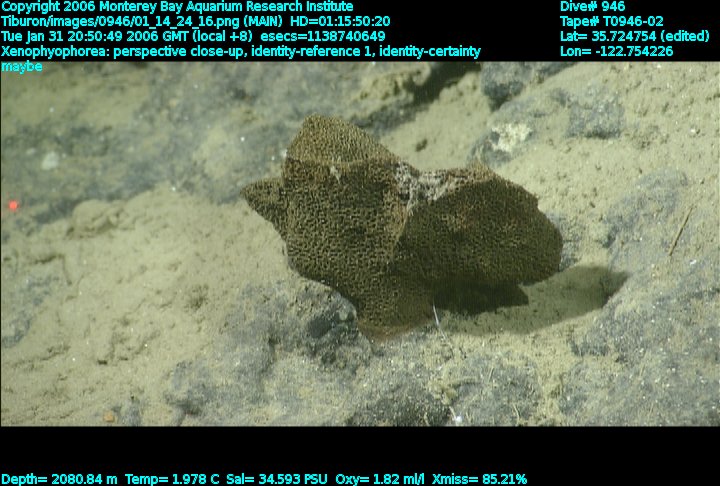
#22 Xenophyophore (Domain: Eukaryota, Kingdom Rhizaria, Phylum Foraminifera, Class Xenophyophorea)
Xenophyophores come in at 22 for several reasons. First, they represent the largest single-celled organism on Earth. The largest of them is Syringammina fragillissima at a maximum of 20cm in diameter. Second, in some areas of the deep, they are the dominant species with over 2,000 individuals per 100 square meters. Then there is the fact that, like ameobas, they use a pseudopodium to engulf food from the mud around them. While doing this they secrete a mucus that can cover a sizeable area on the seafloor.
Fourth and last, you know this is going to be a cool species when its scientific name means "bearer of foreign bodies". The over 40 species of Xenophyophores all build tests from the dead parts of other things, be it diatom skeletons, sponge spicules, or broken shells. To this they may add in sediment grains and a fecal pellet or two for fun.
So to recap, big single-celled animal that secretes a slimy goo all over and attaches the parts of dead things to itself.
Image from NOAA Ocean Explorer








To this they may add in sediment grains and a fecal pellet or two for fun.
Different species use different amounts of different particles. There’s at least one species that constructs its test entirely from faecal pellets, and spends its life happily wrapped up in its own shit.
20cm !! Wow.
So each species uses different mix that’s cool, I was thinking before the comments how using “found” objects like that must make it harder to identify them to genus or species visually. Giant-single-celled-snot-net-casting-fecal-palace-building… what more is there to life?